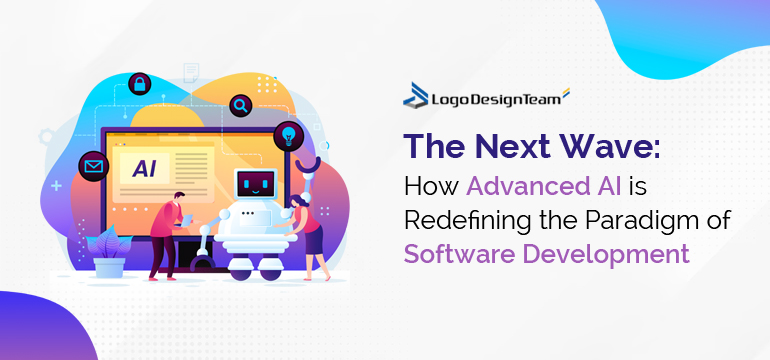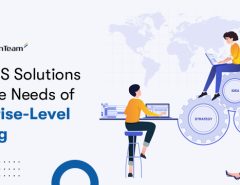In the ever-evolving landscape of technology, the role of artificial intelligence (AI) has become increasingly prominent, transforming various industries and redefining the way we approach complex tasks. One domain where the influence of advanced AI is particularly noteworthy is software development. As we step into the new century, the synergy between human ingenuity and intelligent machines reshapes the traditional paradigms of coding, debugging, and software optimization.
This article explores the profound impact of advanced AI on software development, unraveling how machine learning, natural language processing, and other cutting-edge technologies are revolutionizing the creation and maintenance of software applications. From automating mundane coding tasks to enhancing decision-making processes, the integration of AI is ushering in a new era in the realm of programming.
AI-Driven Code Assistance
AI-driven code assistance in software development has revolutionized the way developers write, analyze, and optimize code. This innovative approach leverages artificial intelligence and machine learning technologies to enhance the efficiency and effectiveness of software development processes.
Such types of assistants provide intelligent code completion suggestions similar to developers’ types. These suggestions are based on context, syntax, and the developer’s coding patterns. By understanding the intent behind the code, AI can offer relevant options, reducing the likelihood of errors and improving productivity.
AI-driven code assistants can assist in refactoring code by automatically suggesting improvements to enhance readability, maintainability, and performance. This includes renaming variables, extracting methods, and optimizing code structures. Developers can save time and ensure code quality with these automated suggestions.
AI-Powered Debugging
AI-powered debugging is a revolutionary approach to identifying and fixing software bugs with the assistance of artificial intelligence technologies. Traditional debugging methods often rely on manual inspection of code, which can be time-consuming and challenging, especially in complex software projects. AI-powered debugging aims to streamline and enhance this process by leveraging machine learning algorithms and data analysis techniques. Key aspects of AI-powered debugging include:
Automated Issue Identification: AI algorithms can analyze code and identify potential issues or bugs automatically. This involves parsing through lines of code, looking for patterns, and comparing them against known bug signatures. This automated approach significantly reduces the time developers spend on manual bug hunting.
Predictive Analysis: AI-powered debugging systems can predict potential issues based on historical data and patterns. By analyzing past bug reports, fixes, and code changes, these systems can provide proactive suggestions to developers, helping them address potential problems before they become critical.
Code Pattern Recognition: AI algorithms excel at recognizing complex patterns within code. They can identify anomalies, deviations from coding best practices, and potential sources of errors. This capability is especially valuable in large codebases where manual inspection might be impractical.
Contextual Understanding: AI-powered debugging systems can understand the context in which code is written. They consider the software’s overall structure, its dependencies, and the specific programming language used. This contextual understanding enables more accurate bug identification and resolution.
Integration with Development Environments: AI-powered debugging tools can seamlessly integrate with popular integrated development environments (IDEs) and version control systems. This integration allows developers to receive real-time suggestions and feedback as they write code, making the debugging process more interactive and iterative.
Continuous Learning: AI-powered debugging systems can learn from new bug reports, code changes, and resolutions. This adaptive learning process improves the accuracy of bug detection over time, making the system more effective as it encounters different types of software projects and coding styles.
Reduced False Positives: AI-powered debugging tools aim to minimize false positives through sophisticated algorithms, ensuring developers are presented with meaningful and relevant information. This helps in maintaining the credibility and usability of the debugging assistance.
While AI-powered debugging holds immense promise, it is important to note that it only partially replaces human expertise. Developers still play a crucial role in understanding the broader context of software projects and making decisions based on their experience. AI in web development is a valuable ally, augmenting developers’ capabilities and enhancing the debugging process’s overall efficiency.
AI-Enhanced Testing
AI-enhanced testing is a cutting-edge approach in software development that leverages artificial intelligence to enhance the testing process’s efficiency, accuracy, and effectiveness. Traditional software testing involves the manual execution of test cases, which can be time-consuming, labor-intensive, and prone to human errors. AI-enhanced testing addresses these challenges by incorporating AI technologies to automate and optimize various aspects of the testing lifecycle.
AI is employed to automate the creation, execution, and maintenance of test scripts. This significantly reduces the time and effort required for repetitive testing tasks. Machine learning algorithms can identify patterns in test data and suggest optimizations to test scripts, improving the overall efficiency of the testing process. AI algorithms also can generate test cases based on the analysis of requirements, code structure, and historical testing data. This helps achieve broader test coverage and identify potential edge cases that might be overlooked in manual testing.
AI algorithms can simulate real-world user scenarios to conduct performance testing. This helps identify bottlenecks, optimize system performance, and ensure the software can handle varying loads and usage patterns.
By integrating AI into the testing process, organizations can achieve faster release cycles, improve test coverage, and enhance the overall quality of their software products. AI-enhanced testing is an evolving field with great potential for revolutionizing how software testing is approached in the ever-dynamic landscape of software development.
AI in Design and User Experience
Artificial Intelligence has significantly impacted the design and user experience in software development. As technology advances, integrating AI into the design process has become essential for creating more intuitive, personalized, and efficient user interfaces.
AI algorithms analyze user behavior, preferences, and interactions with the software to create personalized experiences. Personalization can include tailored content recommendations, adaptive interfaces, and customized user journeys based on individual user data. AI enables predictive design by anticipating user actions and needs, allowing the software to offer relevant suggestions proactively. Predictive design helps streamline the user experience, reduce friction, and enhance overall usability.
AI tools can also automatically generate and refine user interface designs based on specified criteria and design principles. Automated UI design helps save time and resources while ensuring consistency in design elements across different software parts.
AI-driven visual recognition technology enables software to interpret and respond to images, enhancing the visual aspect of UX. Applications include image-based search, augmented reality (AR), and the identification of visual elements for accessibility purposes.
Overall, the integration of AI in design and UX is transforming the way software is developed and experienced by users. From personalization and automation to improved accessibility and data-driven decision-making, AI is a powerful ally in creating software that meets user expectations and evolves to meet changing needs over time.
Collaborative Coding
Some AI-driven tools support collaborative coding by facilitating communication among team members. These tools can suggest code changes, resolve conflicts, and provide insights into the impact of code modifications on the overall project.
AI-driven code assistance continually evolves, with ongoing research and development focused on making software more intuitive and efficient. Developers can expect even greater support as these technologies advance in creating high-quality, maintainable, and error-free code.
Natural Language Programming
AI Natural Language Programming (NLP) is a cutting-edge field within artificial intelligence that focuses on enabling machines to understand, interpret, and generate human-like language. In the context of software development, AI NLP plays a crucial role in enhancing the way developers interact with code, improving collaboration, and automating various aspects of the development process. For example, top rated web developers from NY are increasingly leveraging AI NLP tools to optimize their workflows and produce superior software solutions.
AI NLP tools provide advanced code assistance by understanding natural language queries and context. Developers can benefit from intelligent autocompletion suggestions, making the coding process more efficient and error-resistant. Also, NLP can assist in generating code snippets based on high-level descriptions or requirements expressed in natural language. This accelerates the development process and helps bridge the gap between non-technical stakeholders and developers.
AI-Generated Documentation
AI-generated documentation in software development is very handy. Everybody knows documentation is crucial to software development, providing essential information about the codebase, APIs, and overall system architecture. Traditional documentation methods often involve manual efforts by developers, which can be time-consuming and prone to human errors. AI-generated documentation addresses these challenges by leveraging advanced natural language processing (NLP) and machine learning techniques.
For example, AI can analyze codebases and automatically generate comments for various code sections. This includes explaining functions, classes, and variables. AI algorithms can provide meaningful and contextually relevant comments by understanding the context and relationships within the code.
AI-generated documentation goes beyond simple code comments and can produce comprehensive natural language descriptions. It can explain the purpose of modules, components, and entire systems in a human-readable format. This makes it easier for new and experienced developers to understand the codebase.
AI can automatically generate documentation for application programming interfaces (APIs). This includes describing endpoints, input parameters, expected responses, and error handling. Developers can integrate and use APIs more effectively by keeping API documentation up-to-date. AI algorithms can generate code snippets based on natural language queries. This can be especially useful for developers who are looking for specific functionality or implementation details. AI-generated code snippets can serve as examples and accelerate the development process.
AI can assist in maintaining versioning information and generating change logs automatically. AI algorithms can update documentation by analyzing code changes and commit messages to reflect the latest features, bug fixes, and improvements.
AI-generated documentation can establish connections between different parts of the codebase. This includes cross-referencing functions, classes, and modules. The documentation can also include hyperlinks to related sections, making it easier for developers to navigate and understand the code. With advanced NLP capabilities, AI-generated documentation can be translated into multiple languages. This is particularly valuable for globally distributed development teams, ensuring that documentation is accessible to developers worldwide.
While AI-generated documentation offers significant advantages, it is essential to ensure that the generated content is accurate and aligned with the intended meaning of the code. Continued refinement and validation by developers remain crucial to maintaining the documentation quality in software development.




